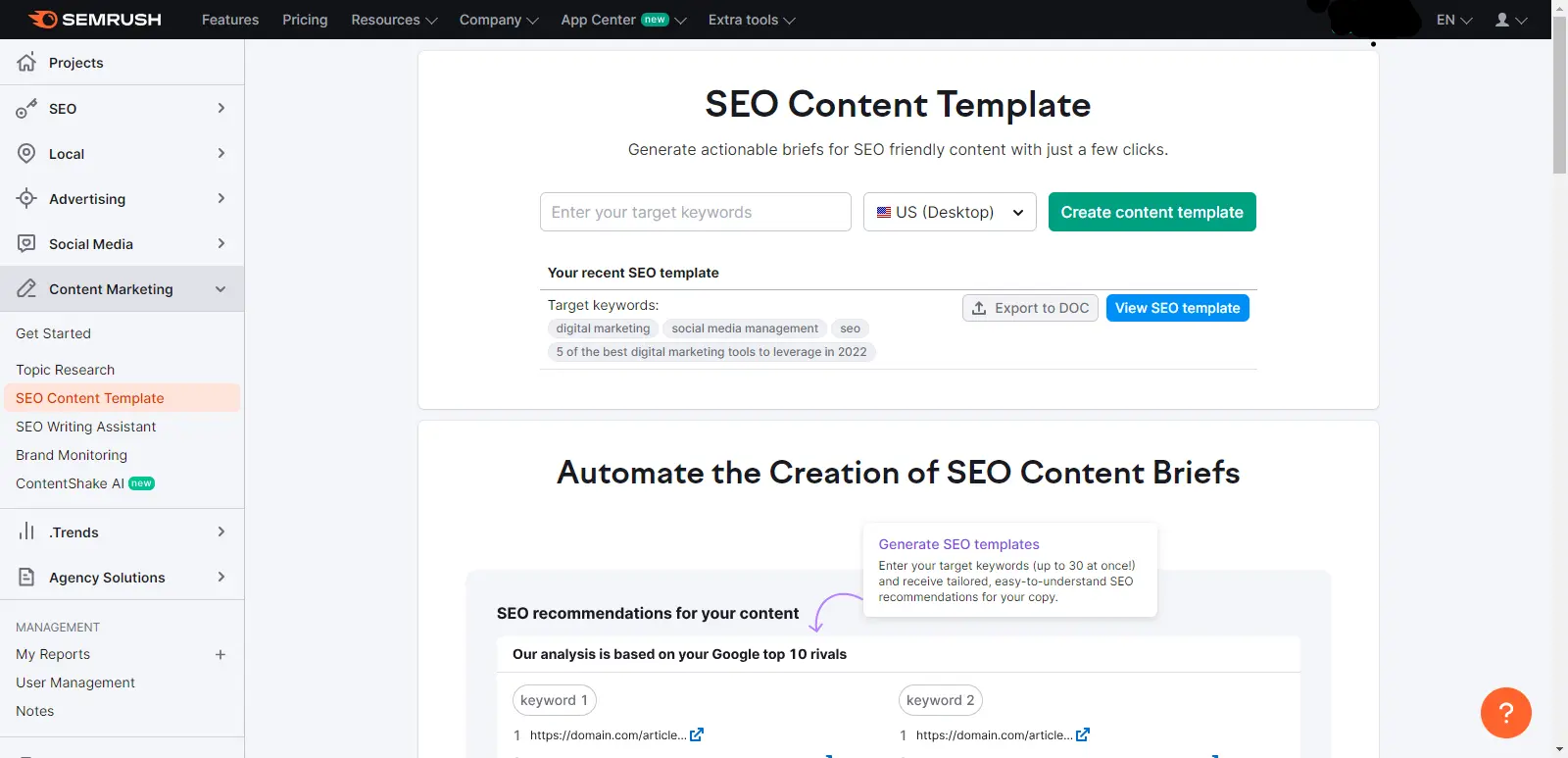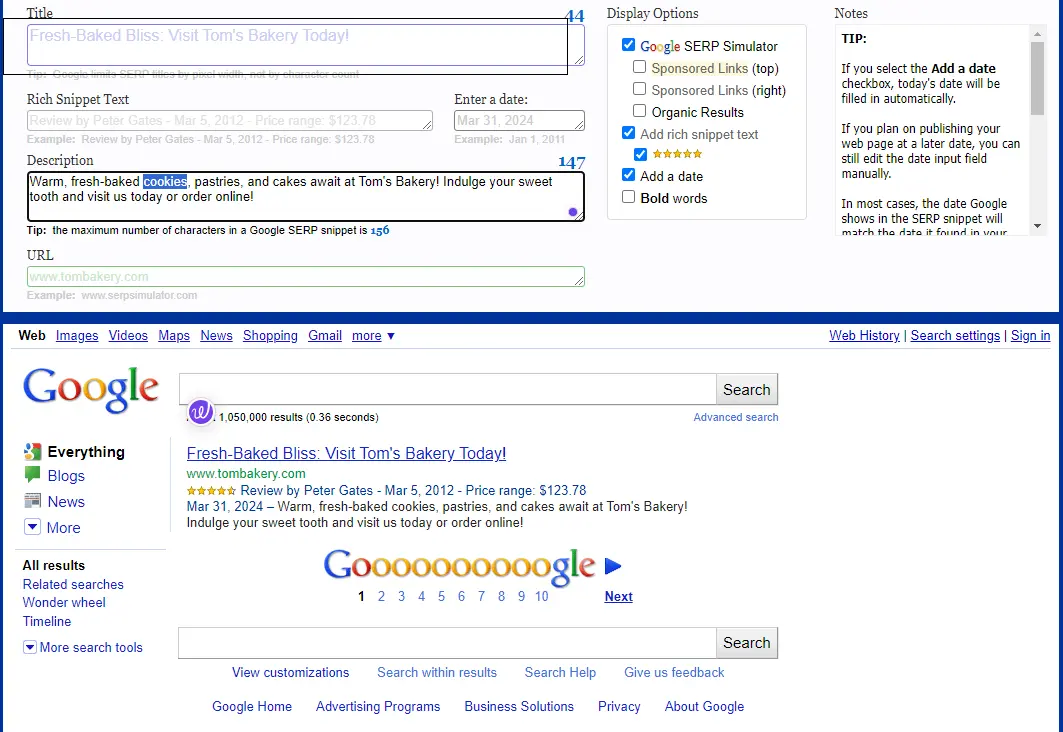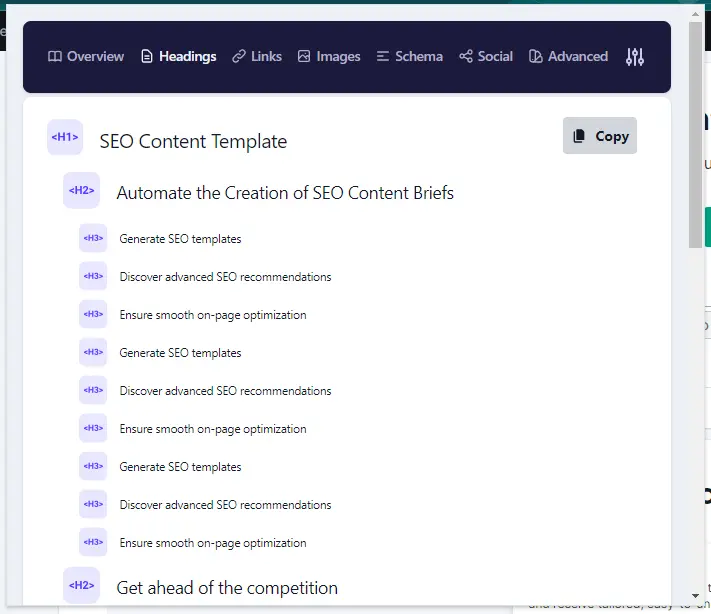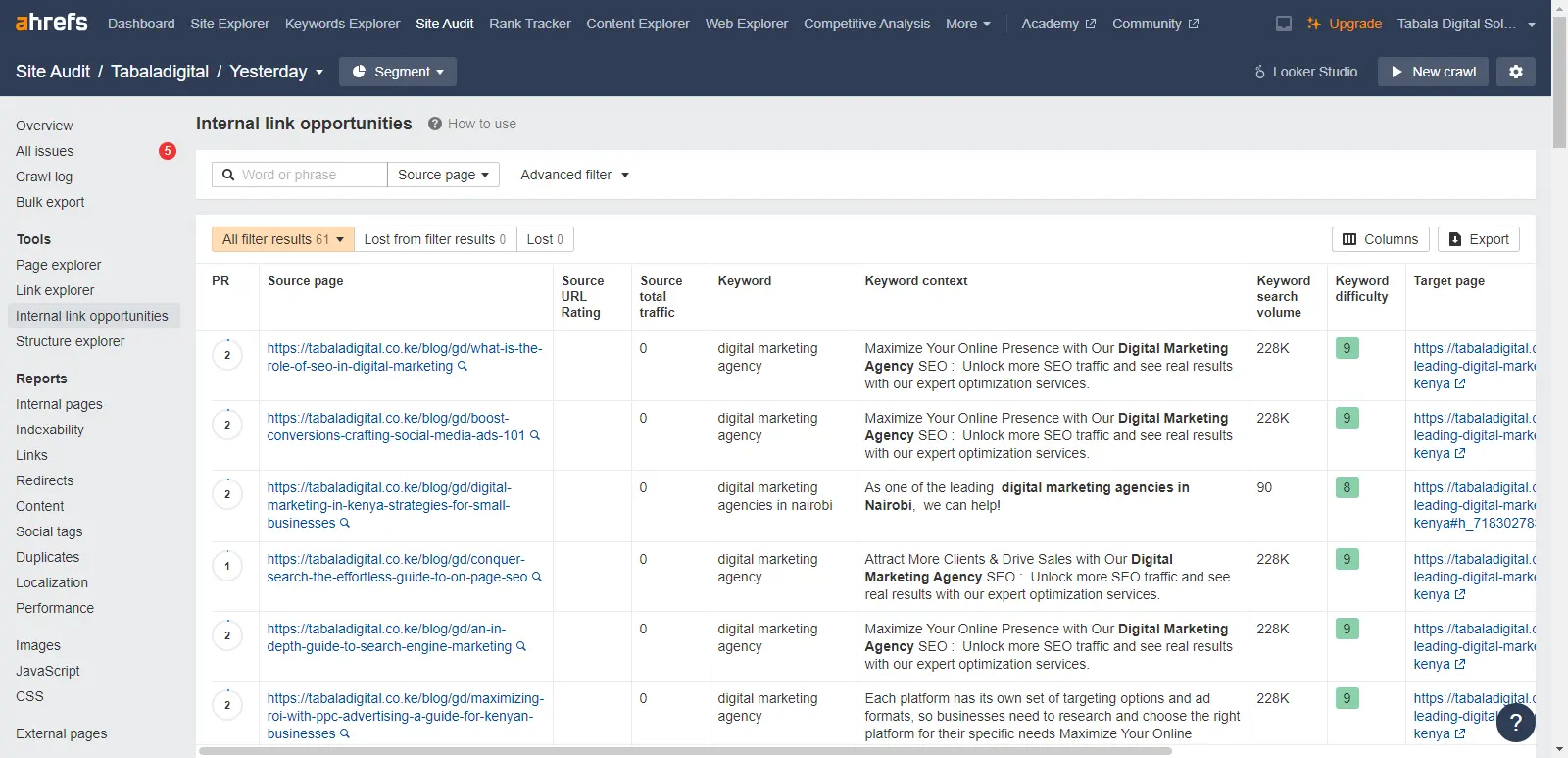Conquer Search: The Effortless Guide to On-Page SEO - In-depth Analysis

In today's digital world, ruling search engines is the key to online success. A whopping 93% of online journeys begin with a search engine source, 95% of search traffic goes to the first page of search results (source) and 51% of website traffic is driven by organic search (source).
If users can't find your website, your amazing products or services might go unnoticed.
Imagine a hidden gem of a bakery with the most delectable cupcakes. Tucked away, no one stumbles upon it, and their treats remain untasted!
That's the fate of countless websites struggling with on-page SEO ( also called onsite SEO).
What is On-Page SEO and Why is it Important?
On-page SEO refers to the practices you implement directly on your website to improve its search engine ranking and user experience.
By optimizing your content, structure, and technical elements, you signal to search engines like Google that your website is relevant and valuable for specific search terms.
In essence, on-page SEO helps search engines understand your website and users find what they're looking for.
This guide unlocks the secrets to effortless on-page SEO, empowering you to take the wheel and:
-
Dominate Search Results: Soar up search ranking, climb the search engine ladder, and own your niche. Get discovered by a flood of potential customers eager to explore your offerings.
-
Drive Organic Traffic: Attract a wave of qualified users directly to your website. Make them hungry to devour the valuable content you have to offer.
-
Become the Ultimate Online Destination: Transform your website into the go-to spot for your target audience. Make it the online haven they can't wait to visit.
Attract More Clients & Drive Sales with Our Digital Marketing Agency
-
SEO: Unlock more SEO traffic and see real results with our expert optimization services.
-
Content marketing: Attract and retain customers with high-quality, engaging content that drives traffic and generates leads.
-
Social media marketing: Our team creates epic content that will get shared, get links, and attract traffic on social media platforms.
-
Google Ads: Effective paid strategies with clear ROI. Let our team help you get the most out of your ad spend.
-
Email marketing: Connect with your audience and drive conversions with targeted email campaigns.
-
Web design and development: A visually appealing and user-friendly website is key to attracting and retaining visitors. Our team can help you create a website that converts.
Effortless On-page SEO: A User-Friendly Approach
Onsite SEO isn't magic; it's about fine-tuning your website for both search engines and users. We'll break down the key areas and actionable tips you can implement right away to dominate your niche:
-
Building a Rock-Solid SEO Foundation: We'll delve into keyword research and URL structure to create a strong base for your SEO strategy.
-
Crafting Compelling Content: Discover how to write high-quality content that satisfies users and search engines alike.
-
Optimizing Your Content for Search Engines: Learn to seamlessly integrate keywords, structure your content with clear headers, and weave your website together with strategic internal links.
Building a Rock-Solid SEO Foundation
Crack the Keyword Code: Unlocking Search Success
Keywords are the golden keys that unlock search engine success. They're the phrases users type in, hoping to find exactly what they need. By understanding what people are actively searching for, you can attract the right visitors to your website.
Uncover Your Treasure Trove of Keywords:
There are two main approaches to keyword research: free and paid tools.

Free & Freemium Tools:
-
Google Keyword Planner: This free tool from Google provides basic keyword search volume data and related keyword suggestions.
-
Keywordtool.io: Explore a wide range of long-tail keyword variations and search volume estimates with a free plan (limited searches).
-
Answer the Public: Uncover user questions and search intent with this free tool, sparking creative content ideas.
Paid Tools with Free Trials:
-
Semrush: Gain in-depth keyword research features, including competition analysis, keyword difficulty scores, and organic traffic insights (offers a free trial).
-
Moz Pro: Access a comprehensive keyword research suite with competitor keyword gap analysis, keyword suggestions, and on-page optimization recommendations (offers a free trial).
-
SpyFu: Uncover your competitor's organic and paid keywords along with historical data to understand their SEO strategies (offers a free trial).
Remember:
-
Use a combination of free and paid tools to match your budget and needs.
-
Free trials allow you to experiment with paid tools before committing.
-
Focus on identifying high-potential keywords with lower competition for better ranking chances.
Focus on Long-Tail Gems:
Don't just chase broad keywords with fierce competition. Instead, target long-tail keywords - these are more specific phrases with lower competition but can attract highly targeted traffic.
For example, instead of the generic term "bakery," aim for "best cupcakes near me." This way, you're attracting users who are closer to the buying stage, actively searching for cupcakes and potentially in your local area.

Benefits of Targeting Long-Tail Keywords:
-
Reduced Competition: Stand out from the crowd with lower competition keywords.
-
Higher Conversion Rates: Attract users with purchase intent, leading to better conversions.
-
Improved Relevancy: Target specific searches, ensuring your content directly addresses user needs.
Build Crisp & Clear URLs: Your Website's Signpost
Your website's URLs act like signposts, guiding users and search engines to the right content.
Here's how to craft clear and descriptive URLs that do double duty:
-
Keep it User-Friendly: Strive for URLs that are easy to read and understand.
-
Target Keywords: Incorporate your target keyword naturally within the URL structure. This helps search engines understand your content's relevance and users grasp the content at a glance.
-
Ditch the Extras: Avoid using excessive parameters and unnecessary symbols. Focus on clarity and conciseness.
-
Separate with Hyphens: Use hyphens (-) to separate words and improve readability. For example: /best-cupcakes-chocolate/
Benefits of Clear URLs:
-
Enhanced User Experience: Clear URLs make it easier for users to navigate your website and understand the content they're about to visit.
-
Improved Search Engine Optimization: Search engines can better understand your content structure and index your pages more effectively with clear URLs.
-
Stronger Brand Identity: Clear, descriptive URLs can reinforce your brand message and leave a lasting impression on users.
Crafting Compelling Content for Users and Search Engines
Content: The Cornerstone of SEO Success
High-quality content is the cornerstone of a successful Search Engine Optimization strategy. It's the magnet that attracts users and search engines to your website.

To learn more about the power of content marketing, dive deeper into our comprehensive guide: A Comprehensive Guide To Content Marketing.
Here's how to craft content that shines:
-
Become an E-A-T Authority: Build trust with search engines and users by establishing Expertise, Authoritativeness, and Trustworthiness (E-A-T).
-
Cite credible sources: Back up your claims with reliable references showcasing your knowledge.
-
Showcase author expertise: Highlight the qualifications and experience of your content creators.
-
Keep your content fresh: Regularly update information with new insights to maintain relevance.
-
Content Tailored to Intent: Identify the user's search intent to deliver exactly what they need.
-
Informational queries: For questions like "how to bake cupcakes," provide detailed explanations that guide users through the process.
-
Transactional queries: For searches like "order cupcakes online," prioritize clear calls to action that encourage users to purchase.
-
Sweet Spot for Content Length: There's no magic word count, but aim for comprehensiveness without information overload. Users crave valuable content, but brevity is key to avoid overwhelming them.
Craft Captivating Titles & Descriptions: Your SEO Billboards
Think of titles and meta descriptions as your prime real estate on search engine results pages (SERPs). Don't waste this valuable space! Here's how to craft captivating titles and descriptions that grab attention:

Mastering the Headline:
-
Conciseness is King: Aim for under 60 characters for titles to avoid truncation in SERPs.
-
Spark Curiosity: Use clear, concise language that entices users to click and learn more. Highlight the value your content offers.
Good Title: Fresh-Baked Bliss: Visit Tom's Bakery! (Appeals to the senses and adds a call to action)
Bad Title: Bakery with Pastries (Generic, lacks details)Keyword Magic: Include relevant keywords throughout your title to boost searchability, but prioritize readability.
Meta Descriptions: Bite-Sized Sales Pitches
Meta descriptions are like bite-sized sales pitches, but instead of just sitting on the shelf, they entice users to click. Here's the recipe for success:

-
Highlight User Benefits: Focus on what users gain from reading your content. What problem will you solve for them? What valuable information will they learn?
-
Action Verbs Drive Clicks: Use strong verbs like "discover," "learn," or "explore" to encourage users to click and delve deeper.
-
Craft a Clear Call to Action (CTA): Tell users exactly what you want them to do next with strong, action-oriented language. Don't leave them guessing! Examples include "Shop our latest collection now!" or "Get started with your free trial today!"
Example:
Poor Meta Description: Bakery serving delicious cupcakes - visit us today! (Generic and doesn't provide much value)
Good Meta Description: Warm, fresh-baked cookies, pastries, and cakes await at Tom's Bakery! Indulge your sweet tooth and visit us today or order online!
Optimizing Your Content for Search Engines
The Art of Natural Keyword Integration
Now that you have your keyword map, it's time to integrate them seamlessly into your content. Remember, the goal is to create a treasure map, not a cryptic riddle.
Avoid keyword stuffing, a practice that disrupts the flow and readability of your writing. Instead, focus on creating a natural flow that prioritizes user experience. Your content should be informative, engaging, and easy to understand.
Example:
Let's say your target keyword is "cupcakes." Weave it naturally throughout your content like this:
In today's world, cupcakes are a popular dessert choice for celebrations and everyday treats. From classic vanilla to decadent chocolate creations, there are endless flavor variations to explore when it comes to cupcakes. Whether you're a seasoned baker or just starting out, there are countless cupcake recipes available to suit your skill level and taste preferences.
Expanding Your Keyword Strategy
Don't stop at just your target keywords! Broaden your vocabulary with synonyms (like "muffins" or "pastries") and LSI keywords (like "frosting," "sprinkles," or "decorating tips"). Including these related terms demonstrates to search engines that you understand the broader topic and enhances the user experience by providing a more comprehensive discussion.
Continuous Monitoring and Adaptation
The SEO landscape is ever-evolving. Don't set your keyword strategy in stone. Regularly monitor your keyword performance using analytics tools. As search engine algorithms evolve and user preferences change, you may need to adjust your approach to stay ahead of the curve.
Remember:
High-quality content that provides value to users is the cornerstone of any successful SEO strategy. By strategically integrating relevant keywords while maintaining a focus on user experience, you can help search engines understand your content and attract organic traffic to your website.
Headings Unveiled: Your Content's Roadmap
Imagine your content as a delicious meal. Header tags (H1, H2, H3, H4, H5, H6) act like a roadmap, guiding users through the course and highlighting the key ingredients. They also send signals to search engines about the content's structure and importance.

Here's how to leverage them effectively:
-
H1: The Big Picture Title: There should only be one H1 tag per page. It's your main course title, capturing the essence of your entire content. This is the most important heading and should be clear, concise, and keyword-rich.
-
H2: Chapter Headings: H2 tags are like your subheadings, introducing the main topics within your content. Think of them as course sections – appetizers, main course, desserts. Use them to break down your content into clear and digestible sections.
-
H3: Sub-section Delights: H3 tags act as sub-subheadings, providing even more detail and structure within your H2 sections. They're like the sub-categories within each course section – different cupcake flavors for dessert, perhaps? While optional, H3 tags can be helpful for longer pieces of content, offering a more granular roadmap for users.
-
H4, H5, H6: For very long and complex content, H4,H5,H6 tags can provide an even deeper level of organization. Imagine them as additional details within a specific cupcake flavor, like frosting options or decoration tips. Use these tags sparingly to avoid overwhelming readers.
Benefits of Strategic Headings
-
Enhanced Readability: Clear headings make your content easier for users to scan and understand, leading to a more enjoyable reading experience. Users can quickly grasp the main points and navigate to sections of interest.
-
Improved SEO: Search engines can efficiently crawl your content and grasp the information hierarchy thanks to headings. This can positively impact your search ranking as search engines understand the structure and relevance of your content.
-
Increased User Engagement: Strategic headings break up text walls and make your content more visually appealing. This can keep users engaged and encourage them to read further.
By strategically using headings (H1-H6), you can create a well-organized and user-friendly content experience that benefits both readers and search engines.
Remember, the goal is to provide a clear roadmap that guides users through your content and helps search engines understand its value.
Weaving Your Website Together: The Power of Internal Links
Imagine your website as a bakery with an abundance of delightful treats. Internal links are like strategically placed signs, guiding users to discover hidden gems and explore different sections – all part of a cohesive bakery experience. They also help search engines understand how your website's content connects.
Here's how to leverage internal linking for SEO benefits:

-
Strategic Link Placement: Don't just scatter links haphazardly. Instead, link to relevant pages within your content using a mix of anchor text types (exact-match, broad-match, and LSI keywords). This creates a smooth user journey and helps search engines connect your content thematically.
-
User-Centric Linking: Put yourself in your users' shoes. When choosing pages to link to, prioritize those that would be most helpful and interesting to your readers. Think of it as guiding them on a delicious adventure through your website, connecting related content, and providing a comprehensive experience.
-
Internal Linking Made Easy: Utilize tools like [Screaming Frog, Ahrefs] to simplify internal linking. These tools crawl your website, analyzing its structure and identifying relevant linking opportunities. They're like a helping hand, suggesting connections you might have missed, and ensuring a well-linked website.
Benefits of Strategic Internal Linking:
-
Enhanced User Experience: Clear internal linking keeps users engaged on your website, allowing them to discover deeper content relevant to their interests.
-
Improved SEO Performance: By effectively linking your website's pages, you signal to search engines the structure and hierarchy of your content, which can positively impact your SEO ranking.
-
Increased Link Equity Distribution: Internal links act like votes of importance. When you link to high-value pages from other relevant pages on your site, you distribute "link equity" which can help boost the authority of those target pages in the eyes of search engines.
-
Reduced Bounce Rate: A well-linked website keeps users engaged and clicking around to explore related content. This decreases the chances of them bouncing off after just one page, sending a positive signal to search engines about your site's user experience.
-
Targeted Traffic Flow: Strategic internal linking allows you to guide users towards specific pages that align with their search intent or further along the buyer's journey. This can lead to increased conversions and sales.
-
Improved Crawl Efficiency: Search engines use internal links to crawl and index your website more effectively. By strategically linking your pages, you ensure that search engines can discover all your valuable content.
- Supports Topical Authority: By linking related content within your niche, you demonstrate topical expertise to search engines. This can help you rank higher for relevant keywords and establish yourself as a thought leader in your industry.
Effortless On-page SEO: A Continuous Journey
Remember, SEO is a marathon, not a sprint. The search engine landscape is constantly evolving, so staying up-to-date and refining your strategies is key to long-term success.
Key Takeaways: Build, Craft, and Optimize
-
Build a Strong Foundation: Research keywords thoroughly, structure URLs clearly, and prioritize user experience.
-
Craft Compelling Content: Focus on high quality, establish E-A-T, and cater to user intent.
-
Optimize for Search Engines: Integrate keywords naturally, leverage header tags strategically, and weave your website together with effective internal linking.
By investing in on-page SEO, you're investing in your website's long-term success. It drives organic traffic, boosts brand awareness, and positions you as a leader in your industry.
This, in turn, strengthens your overall digital marketing strategies, leading to more leads, conversions, and ultimately, revenue growth.
Ready to Unleash the Power of On-Page SEO?
By implementing the actionable tips in this guide, you've taken a significant leap towards dominating your niche in search results. But the journey doesn't stop here!
Get Personalized Help:
-
Contact Form: Have a specific SEO question or need help getting started? Reach out to our team of SEO experts through our convenient contact form embedded within this article. Simply request a quote and we'll be happy to discuss your unique needs.
-
Live Chat Support: For immediate SEO-related questions, consider utilizing our live chat option (WhatsApp button available). Connect with one of our representative in real-time and get the personalized guidance you need to excel in search.
Deepen Your SEO Knowledge:
-
Subscribe to Our Newsletter: Stay ahead of the curve by subscribing to our newsletter. Receive regular SEO tips, industry updates, and valuable insights delivered straight to your inbox.
-
Follow Us on Social Media: Join the conversation and connect with us! Follow Digital Tabala on Facebook (@digitaltabala), LinkedIn (digitaltabala, and Instagram (@digitaltabala) for the latest SEO trends and expert advice.
Become an SEO Pro
No matter your experience level, there's a path for you to become an SEO pro. Let Tabala Digital Solutions, one of the leading SEO companies in Nairobi, guide you on your SEO journey. Together, let's take your website to the top!
Explore Technical SEO
Want to delve deeper into the technical aspects of SEO? Dig into our in-depth guide: "Unlock Top Rankings: Master Technical SEO Like a Pro" https://bit.ly/3vCh5J7.
This comprehensive resource equips you with the advanced strategies needed to optimize your website's technical foundation for search engine success.

Published by: Abala Tom
Date: Mar 26, 2024